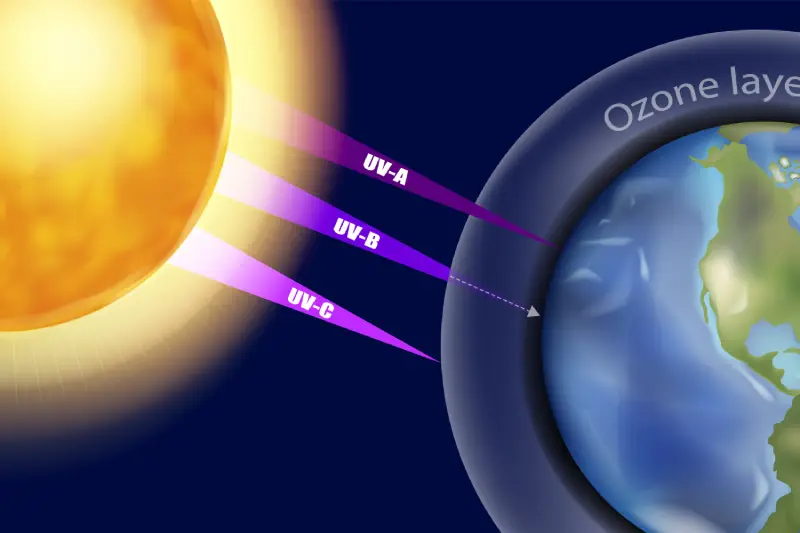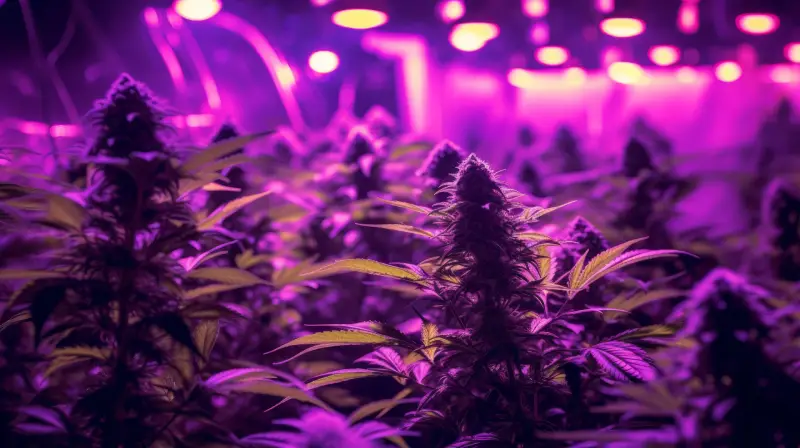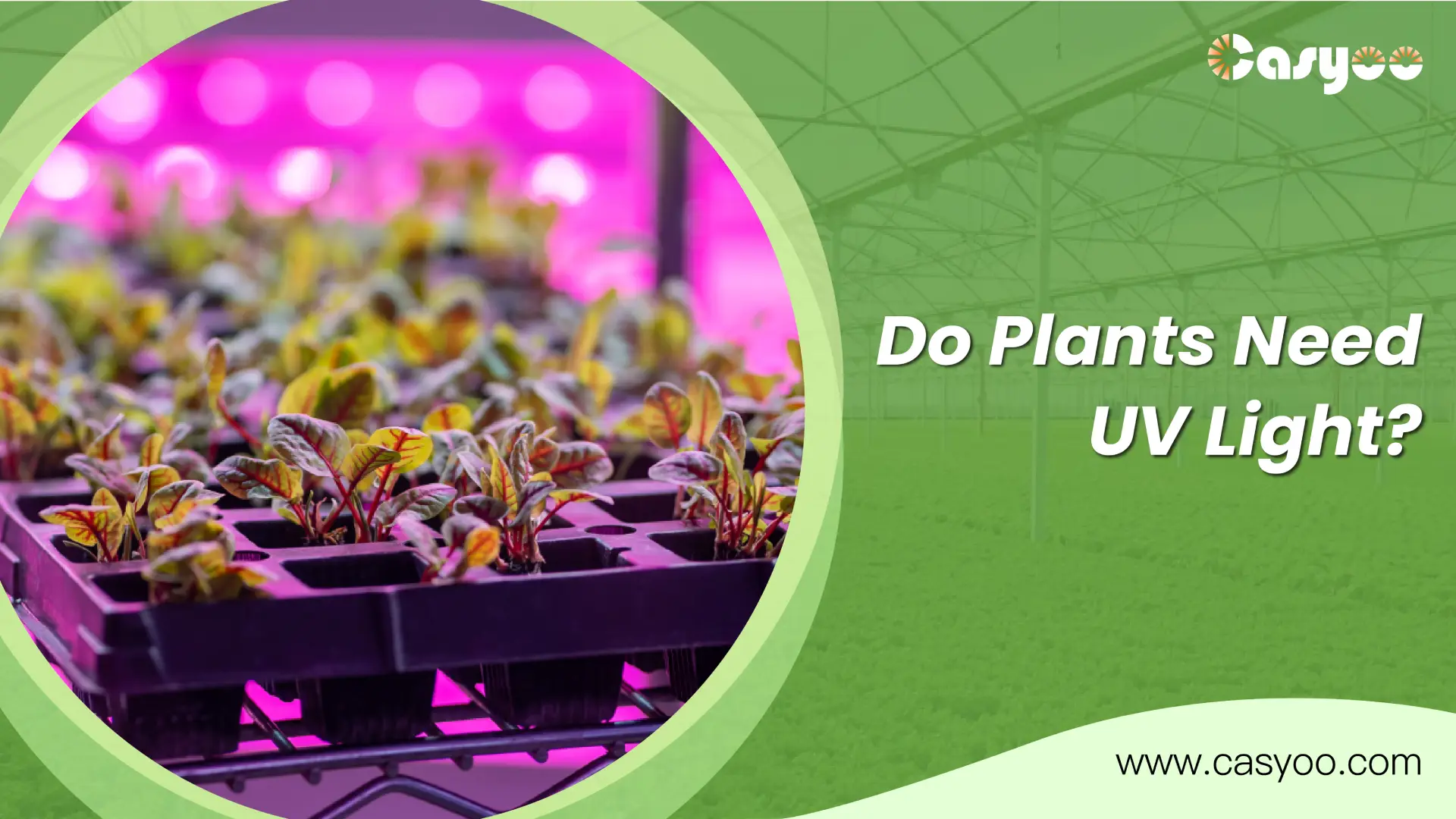We all know that grow lights need to emit specific wavelengths of light to make plants grow. UV rays are controversial. Some people claim that using UV light is harmful to plants, while others claim that using UV light brings out the natural flavors and smells of plants.
The truth is, that UV rays can be beneficial to your plants, but only if you know how to use them. Let’s keep reading.
What is UV light?

Ultraviolet light, referred to as UV, is a kind of light that cannot be seen by the naked eye but exists in nature. It generally falls into three categories:
UVA (320 ~ 400nm): It has the longest wavelength, so the energy is the lowest. More than 95% of ultraviolet rays are UVA. It does not bring any damage to DNA. It is often used in products such as nail lamps or UV flashlights (UV hand lamps).
UVB (280~320nm): Unlike UVA, it can damage DNA and cause cell damage in humans and plants. However, because of its small composition, the ozone layer blocks it better, with approximately 95% being absorbed by the ozone layer.
UVC (200~280nm): Most UVC is isolated by the ozone layer in the atmosphere, and only a very small amount reaches the ground. UVC is the ultraviolet light used in the sterilization process and is often used in products such as air purifiers or sterilization sticks.
Do plants need UV rays for photosynthesis?
Plants do not need ultraviolet light for photosynthesis because ultraviolet light belongs to the electromagnetic spectrum outside the PAR range. But there are many benefits to using UV light in your grow room. UV exposure increases plants’ resistance to pests and diseases and can also improve the color, taste, and smell of fruits, vegetables, and flowers. Exposure to UVB also increases levels of phytochemicals.
How does UV light affect plants?

Plant responses to UV light vary depending on plant type and wavelength. The main benefits can be boiled down as follows:
Improve flower quality, potency and weight
UV light can enhance the generation of terpenes and flavonoids in plants. For those who grow flowers, this means the flavor and aroma of the flowers will increase.
Some studies have proven that UV rays can increase the resins and oils contained in grown plants. This means your flowers will be more potent and you can command a higher price as a commercial grower.
UV light can also increase plant root mass, increase vegetable branching, and reduce stretching, resulting in closer internodes and heavier harvest weights.
Increase resistance to stress and disease
Once exposed to UV light, plants can produce up to 15 different defense proteins. UV rays are capable of destroying harmful microorganisms, especially at wavelengths shorter than 300 nanometers. Not only that, UV rays can also increase plants’ resistance to bacteria, insects and fungi.
Faster germination
UV rays can also promote seed germination. They enhance plant growth and prepare it for higher light intensities. It reduces the “shock” time of seedlings while expediting germination.
Is UV radiation harmful to plants?
If UV rays are too strong or too close to plants, they can cause damage. Too much UV exposure can cause plants to bleach. Bleaching prevents leaves from absorbing light, causing stunted growth and low yields.
Overexposure to UV rays can also severely damage flavonoids and terpenes. Even if the leaves are not affected, the fruit and buds can lose flavor due to too much UV light.
Should you use UV light in your growing space?
Although UV rays can cause some damage when used incorrectly in a grow room, when used correctly, UV rays can provide a range of benefits to help your plants thrive.
Whether you are using UV rays for business purposes or a small indoor growing, adding UV radiation to your LED grow lights will improve yield and quality.
Bear in mind these points when you plan to use UV rays:
- The light needs of your plant type: Not all plants generate resin, and not all resins are as useful as you might hope. If you are going to use UV light, make sure your plants will actually benefit from it. If possible, you will also want to determine the height, power, and location of the UV light around the plant to safely produce resin.
- Height and Space Constraints: You need to place your UV light at the same height as your grow light. Hanging a UV light too close to your plants can cause the plants to fade, so make sure there is enough space to hang the UV light at a safe distance.
- Safety Precautions: Prolonged exposure to UV rays without any safety protection can cause damage to humans and plants. You need to limit the time and intensity of UV light your plants are exposed to, as these excessive UV rays may bleach or burn your plants. If you are exposed to UV rays for an extended period of time, it is recommended to protect yourself by wearing protective glasses and long sleeves.
Final thoughts
All in all, UV light, especially UVB light, is very beneficial to plants. It promotes growth, yield and quality. It also helps improve resistance to pests and diseases. However, it is crucial to use UV rays safely and appropriately to avoid damaging plants. As long as the correct precautions are taken, UV light can be a very useful tool for any plant grower.
Casyoo grow lights have one of the best light spectra for growing plants, with higher levels of beneficial UV rays than the competition. Don’t miss out, contact us now!





